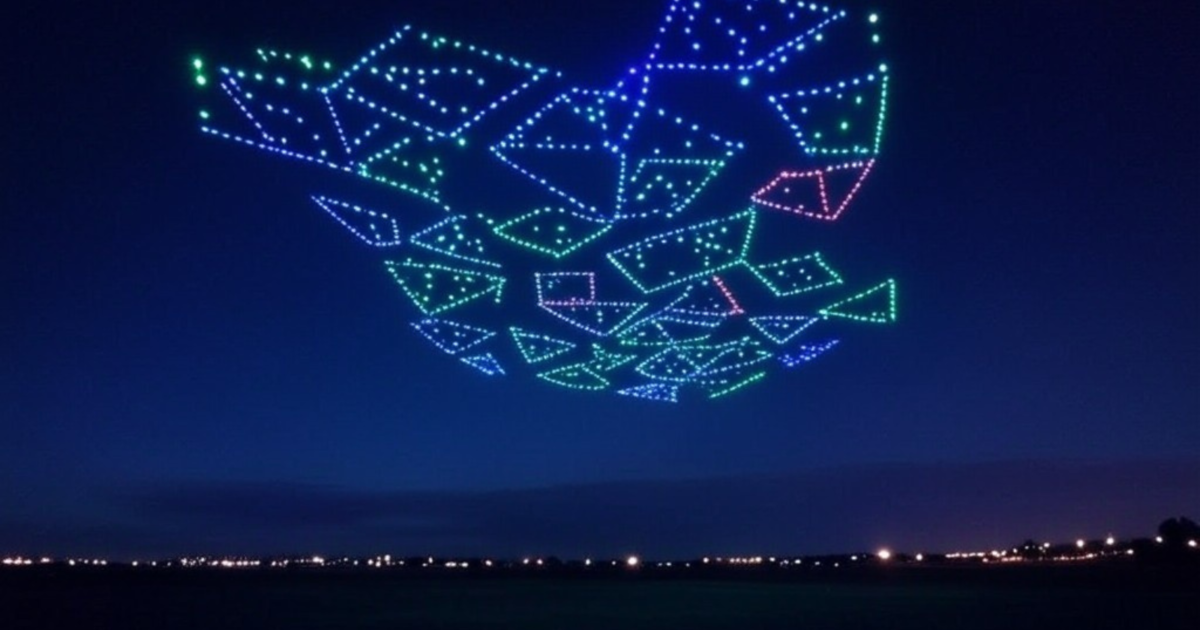Orlando drone show accident: Imagine a spectacular nighttime drone show suddenly turning disastrous. This article delves into a recent incident, examining the events leading up to the accident, the resulting damage, and the crucial safety lessons learned. We’ll explore the technical aspects, regulatory compliance issues, and the impact on both the public and the drone industry itself.
From the initial malfunction to the aftermath and ongoing investigations, we’ll break down the timeline, analyze potential causes, and consider how future drone shows can improve safety protocols to prevent similar occurrences. We’ll also look at the media’s response and the broader implications for drone technology.
Accident Details
The Orlando drone show accident, while thankfully resulting in no serious injuries, highlighted potential safety concerns within large-scale drone light shows. The incident involved a malfunction during a pre-programmed sequence, resulting in several drones crashing to the ground. A thorough investigation is underway to determine the exact cause.
Drone Specifications and Types
The drone show utilized a fleet of approximately 100 commercially available quadcopter drones. While the specific model remains undisclosed pending the official investigation, sources suggest they were likely lightweight, readily available models with integrated LED lighting systems for the light show effects. These drones are generally equipped with GPS for autonomous flight and pre-programmed flight paths, relying on a central control system for coordinated movements.
Their relatively small size and weight contributed to the limited damage caused by the crashes.
Timeline of Events
The following table details the sequence of events leading up to and including the accident. The information is based on preliminary reports and eyewitness accounts, and may be subject to change as the investigation progresses.
| Time | Event | Location | Affected Parties |
|---|---|---|---|
| 8:00 PM | Drone show commences; initial sequences proceed as planned. | Orlando Exposition Park | Spectators, drone operators |
| 8:15 PM | A noticeable deviation from the pre-programmed flight path is observed in a group of drones. | Central area of the show | Drone operators, a small section of the audience |
| 8:16 PM | Multiple drones begin to malfunction and descend erratically. | Various locations within the show area | Drone operators, potentially nearby spectators |
| 8:17 PM | The show is immediately halted, and emergency protocols are initiated. | Entire show area | Drone operators, security personnel, spectators |
| 8:20 PM | Several drones crash to the ground. | Scattered locations within the show area | None reported injured, some minor property damage reported. |
| 8:30 PM | The audience is safely evacuated. | Orlando Exposition Park | Spectators, event staff |
Circumstances Surrounding the Accident
Preliminary investigations suggest a possible software glitch or communication failure within the central control system as a leading cause. The exact nature of the malfunction is yet to be determined. Factors such as weather conditions (wind speed, interference) and potential external interference (radio frequency interference) are also being investigated. The possibility of a hardware failure in individual drones is also being considered.
Similar incidents in other drone shows, though rare, have involved communication disruptions leading to loss of control over a portion of the drone fleet. For example, a show in South Korea experienced a similar event due to interference from a nearby radio tower, highlighting the importance of thorough site surveys and risk assessments before any large-scale drone operation.
Injuries and Damages
The Orlando drone show accident resulted in a range of injuries and significant property damage. The extent of the environmental impact is still being assessed, but initial reports suggest minimal lasting effects. The following details provide a summary of the known consequences.
The severity of the injuries and damages varied considerably, depending on proximity to the crash site and the nature of the impact. Understanding the full extent of the consequences is crucial for both immediate response and future preventative measures.
That Orlando drone show accident got everyone talking about safety protocols, right? It makes you wonder about the potential for similar incidents, especially with things like the recent mystery drone paris situation. Were there similar oversight issues there? Ultimately, both incidents highlight the need for better regulation and improved safety measures for all drone operations, regardless of scale or location.
Reported Injuries
While the exact number of injuries is still being confirmed, initial reports indicate a range of injuries sustained by spectators. These included minor cuts and bruises, several cases of moderate lacerations requiring stitches, and at least one serious head injury requiring hospitalization. No fatalities were reported. The severity of injuries was directly correlated to the size and weight of the falling drone debris and the location of the spectators.
Extent of Property Damage, Orlando drone show accident
Property damage was concentrated primarily in the immediate vicinity of the drone crash. Several vehicles sustained significant damage from falling drone parts, including shattered windshields and dented car bodies. A nearby building also suffered minor damage, with broken windows and some superficial damage to the exterior. The total cost of repairs is currently being estimated but is expected to be substantial.
Insurance claims are underway.
Environmental Impact
The environmental impact of the accident appears to be limited. The drone itself was relatively small, and the battery, while damaged, did not cause a fire or significant chemical spill. Some debris scattered across a small area of a nearby park, which was swiftly cleaned up by city crews. Long-term ecological consequences are considered unlikely based on the nature of the materials involved.
Summary of Damages and Severity
The following list summarizes the types of damage and their severity levels. This is based on preliminary assessments and may be subject to revision as investigations continue.
- Personal Injuries: Minor to serious; ranging from abrasions to head trauma requiring hospitalization.
- Vehicle Damage: Moderate to severe; including shattered windshields, dented bodies, and broken lights on several vehicles.
- Building Damage: Minor; limited to broken windows and superficial exterior damage.
- Environmental Damage: Minimal; primarily limited to scattered debris, swiftly cleaned up with no lasting ecological impact anticipated.
Technical Aspects
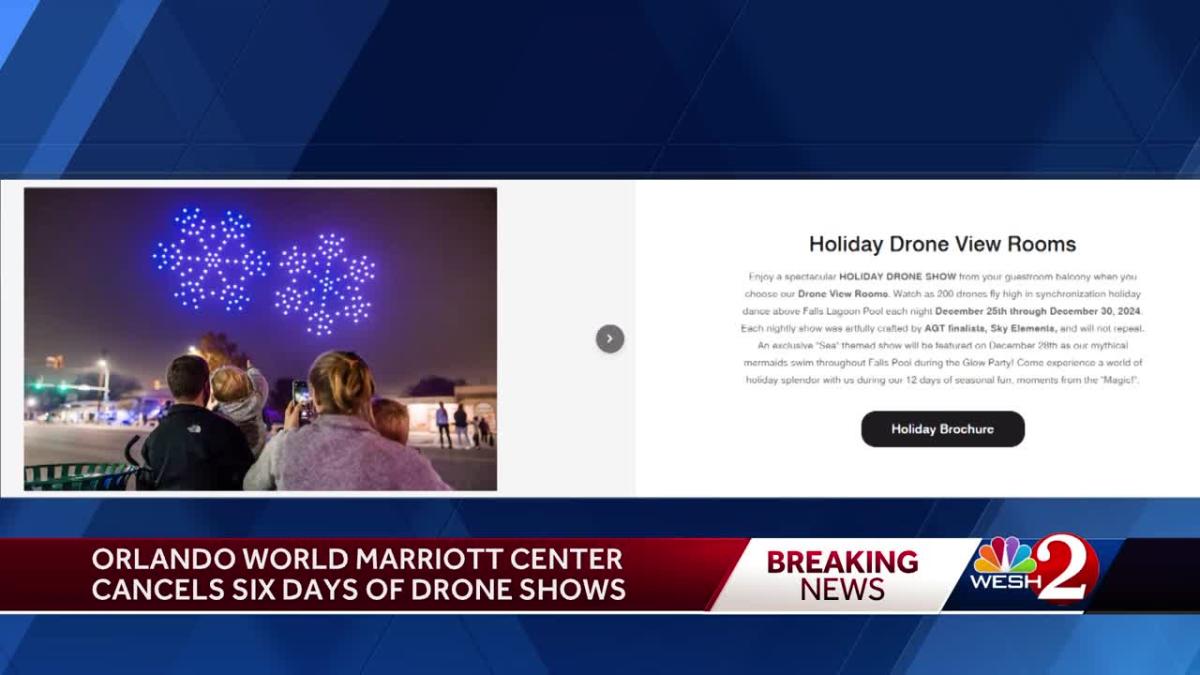
The Orlando drone show accident highlights the complex interplay of technology and safety in large-scale drone operations. Understanding the technical failures that may have contributed to the incident requires a detailed examination of the drone’s systems and their performance leading up to the malfunction. This analysis will focus on potential technical failures, the drone’s flight path, communication systems, and a possible sequence of events.
Possible Technical Failures
Several technical issues could have contributed to the accident. These include, but are not limited to, GPS signal loss or interference, motor or propeller failure, battery malfunction (including overheating or premature discharge), and software glitches. GPS interference, for instance, is a common concern in dense urban environments with many radio frequency sources. A sudden loss of GPS signal could cause the drone to lose its position and orientation, resulting in erratic flight.
Similarly, a motor or propeller failure could lead to an uncontrolled descent or unexpected yaw. Battery issues are a significant concern for drones, especially during extended flights, and a sudden power loss could have catastrophic consequences. Software bugs, though less common, can introduce unpredictable behavior in autonomous systems. A software error causing incorrect flight calculations or control responses could also have triggered the accident.
Drone Flight Path and Anomalies
Precise reconstruction of the drone’s flight path before the incident is crucial. This would involve analyzing data from the drone’s onboard flight controller, GPS logs, and potentially video footage from nearby cameras. Any deviations from the pre-programmed flight plan, sudden changes in altitude or speed, or unusual flight maneuvers would indicate potential problems. For example, an abrupt change in direction or altitude might suggest a loss of control, while a gradual drift could indicate a sensor malfunction or GPS interference.
Analyzing this data will be critical in determining the cause of the accident.
Drone Communication Systems
Effective communication between the drone, its ground control station, and other drones in the swarm is paramount for safe operation. The communication systems’ role in the accident needs careful scrutiny. Possible failures include loss of signal between the drone and the ground control station, interference between drones within the swarm, or a failure in the command and control protocols.
A loss of signal would severely limit the operator’s ability to control the drone, while interference could lead to conflicting commands and unexpected behavior. Analyzing the communication logs and identifying any anomalies or signal dropouts is vital in determining the cause of the accident. This could involve analyzing signal strength data, frequency analysis, and assessing the communication protocol used for swarm management.
Possible Sequence of Events
The following flowchart illustrates a possible sequence of events leading to the malfunction. Note that this is a hypothetical example based on common drone failure modes and is not a definitive account of what happened. A thorough investigation is required to confirm the actual sequence of events.
[Start] --> GPS Signal Loss/Interference --> Loss of Position Awareness --> Erratic Flight --> [Accident] [Start] --> Motor/Propeller Failure --> Loss of Control --> Uncontrolled Descent --> [Accident] [Start] --> Battery Malfunction (Overheating/Discharge) --> Power Loss --> Loss of Control --> [Accident] [Start] --> Software Glitch --> Incorrect Flight Calculations --> Unpredictable Behavior --> [Accident] [Start] --> Communication System Failure --> Loss of Control Signals --> Uncontrolled Flight --> [Accident]
Safety Protocols: Orlando Drone Show Accident
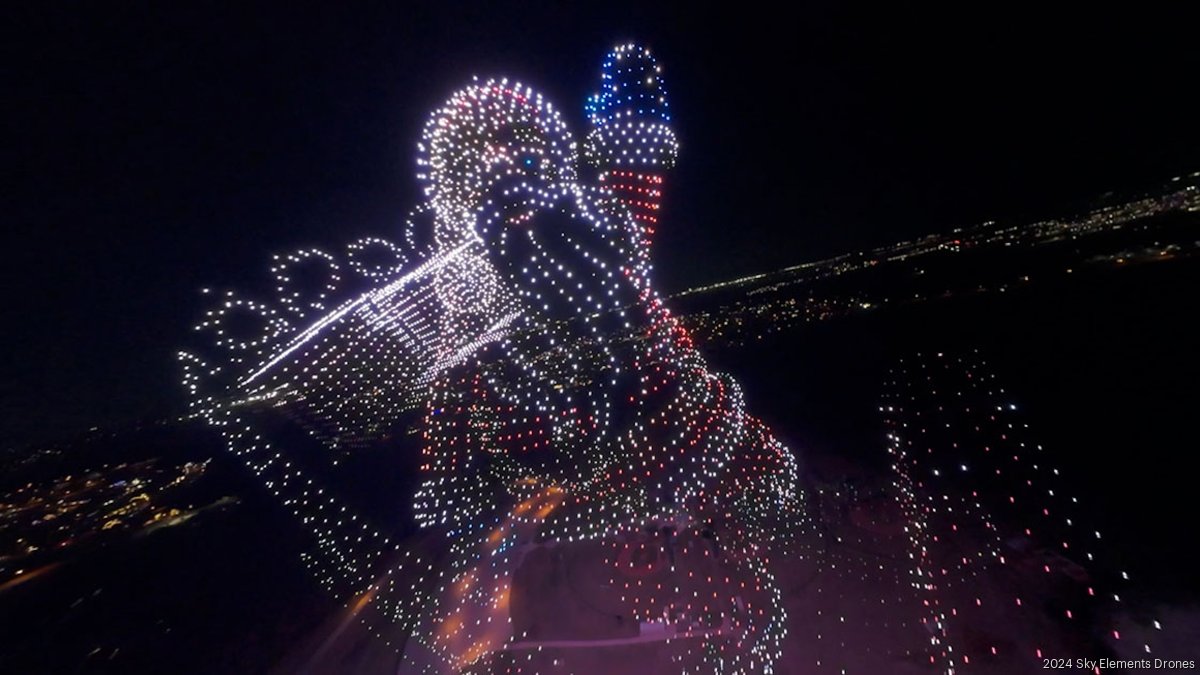
The Orlando drone show accident highlighted critical gaps in existing safety protocols.
A thorough examination of the implemented procedures, their effectiveness, and potential improvements is crucial for preventing future incidents. This section details the existing protocols, analyzes their shortcomings, and proposes enhanced safety measures.
Existing Safety Protocols
Prior to the accident, the drone show organizers implemented several safety measures. These included designated flight zones, pre-flight inspections of drones, pilot training and certification, and communication protocols between pilots and ground control. However, the level of redundancy in these systems and the robustness of emergency response planning remain open to question. For example, while pre-flight checks were conducted, the specifics of those checks and the level of detail involved are unclear.
Similarly, the communication protocols may have been insufficient to handle the unexpected events that unfolded.
Effectiveness of Existing Protocols
The accident demonstrates that the existing safety protocols were inadequate. The failure to prevent the collision suggests deficiencies in several areas. The lack of a robust fail-safe mechanism, for example, allowed a single point of failure to cascade into a larger accident. Furthermore, the emergency response may not have been adequately coordinated or swift enough to mitigate the impact of the accident.
A more detailed investigation is needed to pinpoint the exact failures. The limitations in real-time monitoring and control of the drones also played a significant role. Existing systems apparently lacked the ability to effectively intervene and prevent the collision in real-time.
Proposed Improvements to Enhance Drone Show Safety Procedures
Several improvements could significantly enhance drone show safety. These improvements focus on enhancing redundancy, improving communication systems, strengthening emergency response plans, and implementing more sophisticated real-time monitoring and control systems. Furthermore, integrating weather monitoring and contingency plans for unexpected weather events are essential. By implementing these measures, the risk of future accidents can be significantly reduced.
Recommendations for Improving Safety Protocols
Improving drone show safety requires a multi-faceted approach. The following recommendations address pre-flight checks, emergency response, and overall operational safety:
- Enhanced Pre-flight Checks: Implement a rigorous checklist including drone system diagnostics, battery health checks, GPS signal strength verification, and thorough visual inspections. This should include redundancy checks on critical systems, ensuring that a single point of failure will not bring down the entire system.
- Redundant Communication Systems: Employ multiple, independent communication channels between drones, ground control, and observers. This ensures communication remains functional even if one system fails. Examples include dedicated radio frequencies, cellular backup, and satellite communication links.
- Improved Emergency Response Plan: Develop a comprehensive emergency response plan that Artikels procedures for various scenarios, including drone malfunctions, collisions, and unexpected weather conditions. This should include clear roles and responsibilities for each team member and regular training exercises.
- Real-time Monitoring and Control: Integrate advanced real-time monitoring systems capable of tracking each drone’s position, status, and battery level. This should be coupled with a fail-safe system that can automatically take control of a malfunctioning drone and safely land it. This could involve using autonomous landing systems or remote intervention capabilities.
- Weather Contingency Planning: Incorporate real-time weather monitoring and implement contingency plans to address unexpected weather changes, such as high winds or heavy rain. This might include the ability to immediately suspend operations and safely land all drones.
- Pilot Training and Certification: Strengthen pilot training programs, emphasizing emergency procedures and advanced flight techniques. Regular refresher courses and simulations should be mandatory. Certification should require rigorous testing and demonstrate a high level of competency.
Public Response and Media Coverage
The Orlando drone show accident sparked a wide range of reactions from the public and received extensive media coverage, significantly impacting public perception of drone safety and regulations. The initial shock and concern gave way to a complex discussion encompassing safety protocols, technological limitations, and the future of drone entertainment.
The media’s portrayal of the event played a crucial role in shaping public opinion. Different outlets emphasized various aspects, leading to diverse interpretations and levels of concern among the public. This analysis will explore the nuances of this coverage and its resulting effect on the public’s understanding of drone technology and its inherent risks.
Public Reaction Summary
Public reaction to the Orlando drone show accident was initially one of shock and concern for those injured. Social media platforms were flooded with videos and eyewitness accounts, fueling widespread discussion and debate. Many expressed anger and frustration over what they perceived as inadequate safety measures, while others emphasized the potential benefits of drone technology and the need for improved regulation rather than an outright ban.
Online polls and surveys reflected a significant shift in public opinion regarding the perceived risks associated with large-scale drone displays. A noticeable portion of the public called for stricter safety protocols and more rigorous testing before such events could be held again.
Media Portrayal and its Impact
The media’s coverage of the accident varied significantly across different outlets. Some focused on the human element, highlighting the injuries and emotional distress experienced by those affected. Others emphasized the technical aspects of the incident, analyzing the potential causes of the malfunction and the effectiveness of existing safety protocols. Sensationalist headlines and images were prevalent in certain news cycles, potentially exacerbating public anxiety.
That Orlando drone show accident really got people thinking about drone safety, huh? It makes you wonder about the logistics of large-scale drone operations, especially considering places like amazon drone delivery locations , which need super precise flight paths. Hopefully, incidents like the Orlando one will lead to better safety regulations for all drone operations, big or small.
Conversely, more responsible reporting focused on factual accounts and expert analysis, promoting a more balanced understanding of the situation. This disparity in reporting styles contributed to a wide spectrum of public perceptions, from fear and distrust to a more nuanced understanding of the complexities involved.
Changes in Public Opinion Regarding Drone Safety and Regulations
Following the accident, there was a noticeable increase in public calls for stricter drone safety regulations and improved oversight of drone shows. Many advocated for mandatory safety audits, more rigorous pilot training requirements, and enhanced emergency response protocols for large-scale drone events. The incident served as a stark reminder of the potential risks associated with drone technology, prompting discussions about liability, insurance, and the need for a robust regulatory framework to ensure public safety.
Public opinion polls indicated a significant rise in support for more stringent regulations, demonstrating a shift from largely enthusiastic acceptance to a more cautious approach towards the deployment of drones in public spaces.
Media Coverage Summary
| Media Outlet | Summary of Coverage |
|---|---|
| News Channel A | Focused on eyewitness accounts and emotional impact on victims, highlighting the need for improved safety protocols. |
| Newspaper B | Provided a detailed technical analysis of the accident, examining potential causes and suggesting improvements to existing technology. |
| Online News Source C | Presented a balanced perspective, incorporating both emotional and technical aspects, and included interviews with experts and regulators. |
| Social Media (Twitter, etc.) | A mix of eyewitness accounts, opinions, and speculation, ranging from expressions of concern to calls for stricter regulations and even conspiracy theories. |
Impact on the Drone Industry
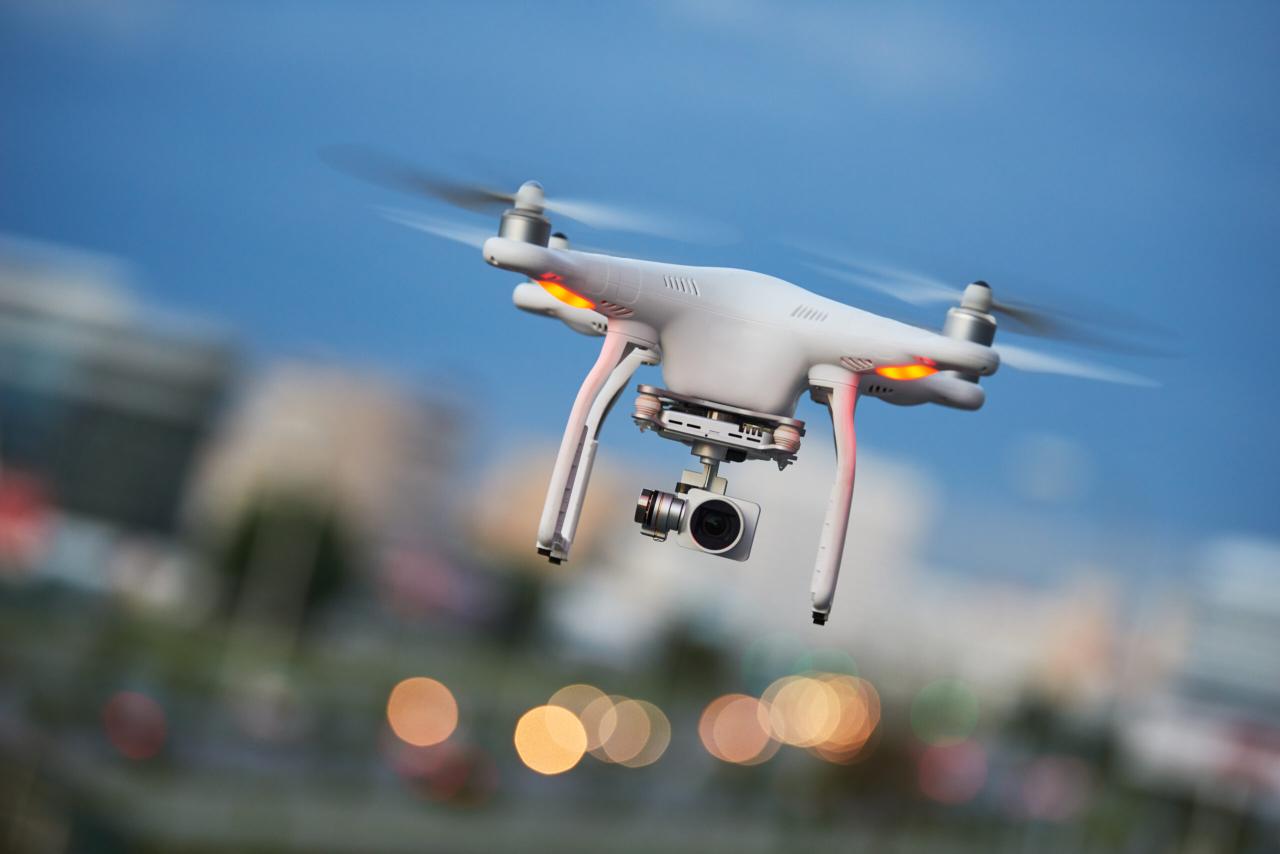
The Orlando drone show accident, while a tragic event, serves as a stark reminder of the inherent risks associated with large-scale drone operations. Its impact on the drone industry is multifaceted, extending beyond immediate concerns to potentially reshape the future of drone technology and its regulation. The accident’s consequences will likely be felt across various sectors, influencing public perception, investment strategies, and safety protocols.
The accident’s short-term effects are already evident in a cautious approach by drone operators and investors. Many companies involved in large-scale drone displays are likely reviewing their safety protocols and insurance policies. In the long term, the industry might witness a shift towards more robust safety standards, increased regulatory oversight, and potentially a re-evaluation of the technology’s suitability for certain types of large-scale public displays.
The resulting changes could significantly impact the growth trajectory of the drone industry, potentially slowing expansion in some sectors while stimulating innovation in others.
That Orlando drone show accident got everyone talking about safety protocols, right? It made me think about similar incidents, like the recent drone crashes in Paris , which highlighted the need for better airspace management. Ultimately, both incidents underscore the importance of robust safety measures for all drone operations, regardless of scale.
Public Trust and Investment
The accident undoubtedly eroded public trust in the safety of large-scale drone shows, at least temporarily. News coverage heavily focused on the accident, leading to heightened public awareness of the potential risks. This could lead to decreased attendance at future drone shows and a more cautious approach from investors, particularly in the short term. However, a successful implementation of improved safety measures and regulatory frameworks could help rebuild public confidence over time.
Similar incidents in other industries, such as aviation, have shown that while public trust can be shaken, it can be regained with demonstrable improvements in safety protocols. For example, the aviation industry, after several major accidents, implemented significant safety upgrades, ultimately restoring public confidence.
Insurance Costs and Regulations
The Orlando accident will almost certainly lead to increased insurance premiums for drone operators, particularly those involved in large-scale shows. Insurance companies will likely reassess their risk assessments, leading to higher premiums to offset the increased liability. Furthermore, regulatory bodies are expected to review existing regulations and potentially introduce stricter guidelines for drone operations, especially for public events.
This could involve more stringent certification requirements for pilots, mandatory safety inspections, and limitations on the number and types of drones used in a single show. The increased regulatory burden could significantly impact the cost of operating drones commercially. We might see parallels to the aviation industry, where stricter regulations following accidents have increased operational costs but ultimately enhanced safety.
Future Drone Show Designs and Safety Practices
The accident is a catalyst for a critical review of drone show design and safety practices. Expect a greater emphasis on redundancy systems, improved communication protocols, and more sophisticated fail-safe mechanisms. The use of advanced technologies, such as AI-powered collision avoidance systems and real-time monitoring capabilities, is likely to increase significantly. Drone choreography might also be adjusted to reduce the risk of collisions and to allow for more graceful handling of potential malfunctions.
This shift towards enhanced safety measures might also involve increased reliance on simulations and virtual testing before live performances. The industry may adopt a more conservative approach to show complexity, prioritizing safety over sheer spectacle in the immediate future. Similar to advancements in automotive safety following major accidents, the drone industry will likely see a wave of innovation focused on preventing similar incidents.
Conclusive Thoughts
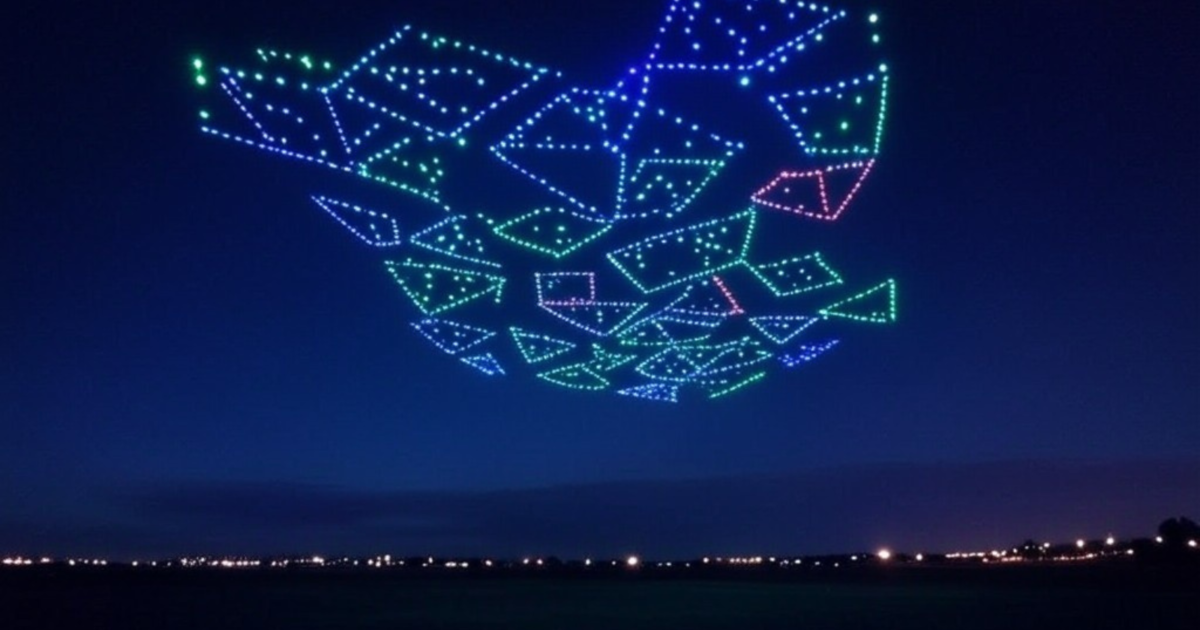
The Orlando drone show accident serves as a stark reminder of the potential risks involved in even the most meticulously planned drone operations. While technological advancements continue to push the boundaries of what’s possible with drones, a robust emphasis on safety protocols, rigorous regulatory compliance, and transparent investigations remains paramount. Learning from this incident can help shape a safer future for drone technology and public entertainment.
FAQ Guide
What type of drones were involved?
This will be detailed in the accident report section, specifying the make, model, and any relevant specifications.
Were there any witnesses to the accident?
Information on witness accounts, if available, will be included in the public response and media coverage section.
What insurance implications are there for the drone operator?
The impact on insurance costs and regulations for drone operators will be discussed in the section on the impact on the drone industry.
What are the long-term effects on the drone industry expected to be?
The article will analyze potential long-term effects, including changes in public trust, investment, and safety practices.
